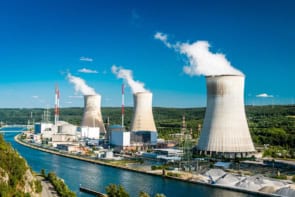To those who crave natural daylight, the idea of spending large chunks of time deep underground may seem like hell. But to particle physicists, this subterranean lifestyle is a price worth paying for the excellent radiation shielding provided by the overlying rock. In this video, Art McDonald of Queen’s University in Canada briefly outlines the major benefits of taking your particle-physics lab to a land beneath our feet.
McDonald, who was a long-standing director of the Sudbury Neutrino Observatory (SNO), explains how these underground science labs are designed to detect the interesting particles that can make it through the layers of overlying rock. An example is the neutrinos produced in the core of the Sun, whose properties can help to verify solar dynamics models. “We also make the surrounding areas really clean, avoiding the radioactivity contained in any mine dust that would potentially get into our experiments,” McDonald adds.
SNO has now expanded into SNOLAB, which covers a more diverse range of research. This includes the search for dark-matter particles and the hunt for a rare form of decay called neutrinoless double beta decay – a process that could help explain why the universe has significantly more matter than antimatter.
To find out more about subterranean physics, check out this feature article from the May 2015 issue of Physics World that looks at how deep underground laboratories of the world are no longer the scientific realm of astroparticle physics alone.
Also, if you enjoyed this video explainer, then check out more from our 100 Second Science series.



